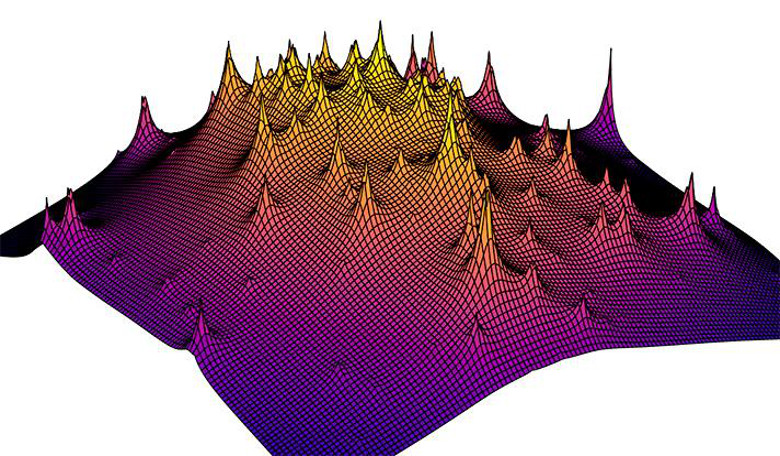A team of researchers has put forward a very compelling case for the existence of cold dark matter by producing one of the highest-resolution maps of dark matter ever created.
The map, which was created with data from the Hubble Space Telescope Frontier Fields program, used information from gravitationally-lensed galaxies. A gravitational lens is a distribution of matter, in this case a trio of distant galaxies, between an observer and a far-away light source that ‘bends’ the light from the source as it travels towards the observer.
Dark matter particles, such as Weakly Interacting Massive Particles (WIMPS), are thought by many to provide the unseen mass that is responsible for gravitational lensing, as it bends light from these distant galaxies. This light bending produces systematic distortions in the shapes of galaxies viewed through the lens and the Yale-led team decoded these distortions to help create the new dark matter map.
The team also used a set of high-resolution simulations known as the Illustris suite that mimics structure formation in the universe and includes processes such as gravity, the hydrodynamics of gas, star formation and feedback processes to compare with their lensed data. The team also used data from massive clusters which are extremely rare in the universe and hence unlikely to appear in present-day cosmological simulations, thus adding to the authenticity of the map.
"With the data of these three lensing clusters we have successfully mapped the granularity of dark matter within the clusters in exquisite detail," said Priyamvada Natarajan from Yale University, lead author of the recent research paper submitted in the journal Monthly Notices of the Royal Astronomical Society. "We have mapped all of the clumps of dark matter that the data permit us to detect, and have produced the most detailed topological map of the dark matter landscape to date."
The team also note that their map closely matches computer simulations of dark matter theoretically predicted by the cold dark matter model - an added benefit, as all of the evidence for dark matter to date is so far indirect, said the researchers.
"While we now have a precise cosmic inventory for the amount of dark matter and how it is distributed in the Universe, the particle itself remains elusive," Natarajan said. The current leading candidates for cold dark matter include axions and neutralinos and with experiments at Yale and elsewhere attempting to identify the elusive particle, it will hopefully only be a matter of time before it’s true nature is revealed.











